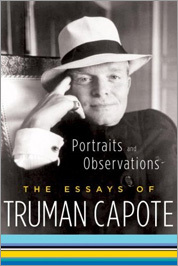 As it is now the end of December, we're being inundated with "Best of 2009" and "Best of the Decade Lists." I've written many of these articles myself and usually find them to be little more than space fillers, but I do appreciate a chance to look back over the past year.
As it is now the end of December, we're being inundated with "Best of 2009" and "Best of the Decade Lists." I've written many of these articles myself and usually find them to be little more than space fillers, but I do appreciate a chance to look back over the past year.In 2009 I read 38 books, though most weren't published this year. I wouldn't pick up the majority again, though many of them were great reads. Herewith, the 10 best books I read in 2009.

1. The Magician's Elephant, by Kate DiCamillo
 I've said many times how I find DiCamillo's writing luminous, moving and beautiful. In The Magician's Elephant, she takes it to a whole new level, telling the story of an orphan in search of his sister.
I've said many times how I find DiCamillo's writing luminous, moving and beautiful. In The Magician's Elephant, she takes it to a whole new level, telling the story of an orphan in search of his sister.
2. The Believer Book of Writers Talking to Writers, edited by Vendela Vida
The writers featured are a mix of well-known and up-and-coming authors, and the intelligence of both the interviewers and interviewees makes this a dynamic read.
3. The Member of the Wedding, by Carson McCullers
After trying and failing to read The Heart is a Lonely Hunter, I picked up this novella and immediately fell in love with 12-year-old Frankie, her cousin John Henry West and her maid Berenice, the main characters in this tragic tale.
4. Infinite Jest, by David Foster Wallace
Reading Infinite Jest is the most ambitious reading project I ever undertook, and for that reason it is on this list. It's not the best book I read all year, but it was great, as was the satisfaction I felt when turning the last page.
5. City of Refuge, by Tom Piazza
The story of two very different experiences with Hurricane Katrina, City of Refuge is a heart-breaking, gorgeously-written story. I loved it.
6. The Girl With the Dragon Tattoo, by Stieg Larsson
I rarely read thrillers, but like to pick them up on occasion. Larsson's intricate, electric tale is terrific.
Honorable mentions: The Brief, Wondrous Life of Oscar Wao, by Junot Diaz; Everything Ravaged, Everything Burned, by Wells Tower; Looking for Alaska, by John Green; and Garlic and Sapphires, The Secret Life of a Critic in Disguise, by Ruth Reichl.














